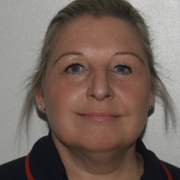
How do we as respiratory healthcare professionals (HCPs) improve our approach to patient-centred care? I find the simplest start is to Ask! It’s a short word, but one that is so important to patient care, and one often forgotten as we try to be skilled in making sure patients get the best care.
Being patient first in respiratory care is about shared decision-making, building relationships, and empowering patients. It’s the conversation that happens between a patient and their HCP to reach a healthcare choice together – the conversation that requires patients and professionals to understand what is important to the other person when choosing a treatment.
As part of our training as HCPs, I find it is something that is lacking as we concentrate on practical approaches to care. Rather than asking: what can we do? What can we suggest? What medications should we prescribe? We should be asking what is important to the patient, what options can we offer you? Sharing the decisions of care with a patient will enhance not only their experience of health care, but yours also, as a clinician.
Patient care and shared decision-making
Shared decision-making is not a new concept. Three papers set the ball rolling in 2010/2012:
- Equality and Excellence: Liberating the NHS[1]
- Liberating the NHS: Greater Choice and Control[2]
- Liberating the NHS: No decision about me without me[3]
These papers set out the government’s vision of an NHS that puts patients and the public first. The visions were designed to give everyone more say over care and treatment, more opportunity to make informed choices securing better care and better outcomes. It was the first consultation document that sought views on the choices that people wanted to make, when they wanted to make them, and support needed to be able to have more say in those decisions. ‘No decision about me without me’ was to make this statement a reality.
So, what does this mean to be patient first in respiratory care? There are multiple decision aids used in respiratory care. The main ones concentrate on reducing tobacco dependence (smoking cessation) and inhaler choice, in particular reducing carbon footprint, and self-management.[4],[5],[6]
HCPs give information about an option that is medically better for a patient based on their personal medical history and test results. Patients give professionals information on their life and experiences of illness and treatment. Patients have views that one treatment option may fit better in their life than another. This may differ from the medically best treatment.
The shared decision-making conversation needs both the patient and professional to understand the other’s point of view and agree the reasons why the treatment chosen was the best for the patient. This may be the best medical option or best option for the patient’s life.
Shared decision-making: the process
Generally, there are 5 steps in this process. Let’s take COPD as an example.
-
- Introduction – As HCPs, we need to give the patient information regarding COPD, in my experience, this would involve answering questions like: What do the lungs do? What is COPD and its symptoms? What are flare-ups? Why has this happened to me and how do I know if I have COPD? What are the main treatments for COPD? What types of decisions are people with COPD making?
- Then Compare Options – Discuss what the options are to improve the patient’s COPD. The HCP may review how out of breath the patient feels, how their lungs work, how often they will have chest infections, coughing, how likely they are to have a flare up and fatigue levels. Ask how the patient feels, tell how likely hospital admission is, how long they will live and how likely the treatment may cause unwanted effects / complications.[7]
- Then look at My Views – Consider the consequences of each of the available options. If the patient is not sure, I would suggest looking at some statements to help them make decisions.
- Consider Trade-offs – Weigh up the pros and cons of the options, looking at risk and benefits.
- Then finally – My Decision – Now the patient has considered the options and their personal views, they can select which options they would consider.
Just ask
Patient first respiratory care embodies the essence of shared decision-making. For example, we as health care professionals know that the inhaled therapy that is best for the patient is the one that they can adequately activate and will use on a regular basis.
Whilst it is our job to guide them towards therapies that make good scientific sense, we need to ensure that they are empowered to make choices that suit them. A decision that is shared is likely to be the one that has most adherence, and therefore, the best clinical outcome.
Sometimes, patients’ decisions are not ones of our choosing and that is hard to reconcile, for example, patients who continue to smoke after diagnosis. However, it is our job to support them and nurture a relationship that may result in a change of behaviour.
A great article I have seen around this is ‘Shared Decision Making — The Pinnacle of Patient-Centered Care’ where they introduced the concept of asking “What matters to you?” alongside “What is the matter?”.[8] This alternative addition of phrasing a question builds trust and enhances the therapeutic relationship. Remember, you just need to ASK!
Any advice given and opinions expressed in this article are those of the author and do not reflect the view of Chiesi Limited (Chiesi). All content in this article is for informational and educational purposes only. Although Chiesi strives to always provide accurate information, it is not responsible for and does not verify for accuracy any of the information contained within.
[1] Department of Health and Social Care. Equity and excellence: Liberating the NHS. Available at: https://assets.publishing.service.gov.uk/government/uploads/system/uploads/attachment_data/file/213823/dh_117794.pdf
[2] Department of Health and Social Care. Liberating the NHS: Greater choice and control. Available at: https://assets.publishing.service.gov.uk/government/uploads/system/uploads/attachment_data/file/216149/dh_130451.pdf?msclkid=462dc4cbb33e11ec93eab22b4ba034d6
[3] Department of Health and Social Care. No decision about me, without me. Available at: https://assets.publishing.service.gov.uk/government/uploads/system/uploads/attachment_data/file/216980/Liberating-the-NHS-No-decision-about-me-without-me-Government-response.pdf?msclkid=66cc2ffcb33e11ecbeed8d9468d05205
[4] NHS England. Shared Decision Making – smoking cessation. Available at: https://clinical-pathways.org.uk/sites/default/files/referral-support/Respiratory%2C%20Shared%20Decision%20Making/smoking-cessation-january-2017.pdf
[5] NICE. Patient decision aid: Inhalers for asthma. Available at: https://www.nice.org.uk/guidance/ng80/resources/inhalers-for-asthma-patient-decision-aid-pdf-6727144573
[6] Primary Care Respiratory Academy. Tailoring a plan for supported self-management to the patient. Available at: https://respiratoryacademy.co.uk/resources/tailoring-a-plan-for-supported-self-management-to-the-patient/
[7] NHS England. Shared Decision Making – chronic obstructive pulmonary disease (COPD). Available at: https://www.valeofyorkccg.nhs.uk/seecmsfile/?id=1935&inline=1
[8] The New England Journal of Medicine. Shared Decision Making — The Pinnacle of Patient-Centered Care. Available at: https://www.nejm.org/doi/full/10.1056/nejmp1109283



 Joanne King
Joanne King 

